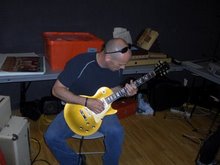we see time in our minds as a flow, from right to left, left to right or back to front. a line of times running from way in the past from the depths of memory and forward into an imgined future. this timeline is laid out this way as our concepts of space allow. the philosopher p.d. ouspensky suggested that as ideas about space change then so will our ideas about time. the quantum mechanical model of the universe binds space/time together as one thing. these are constructs of semantics, a universe built on words, very powerful things.
when we think about things that happen in the past, in our mind`s eye, they are framed in one area in the mind. as the images progress in time in our mind, the image frame moves over, and as our thoughts move onto the future the frame is in a completely different location. the differences in the position of these frames is known as the time line. people`s timelines travel in different directions. left to right, right to left and back to front right through the head, as it were. people`s trajectories vary, but the concept is the same.
in the first frame we see things that we know with certainty that happened in the past, in the middle frame we see things that are happening now, and in the final frame we can imagine things occuring in the future.
here comes the predictive aspect and practice.
build up past frames of information and occurances the you know have happened. then build up a frame of things that are happening now. now, in the final frame see a glass of water either full of liquid or empty, representing a good or a bad outcome for whatever it is the you are predicting.
you can use this to see future winners of sports games, stock prices, business ventures or anything that has a flow from past to present and be able to test the accuracy of your predictions with facts as they occur.
this practice is something that takes time to develop, but with time, some astonishing results can be attained. the rule is slow and patient with the practice of visualisation. seeing the past and present images strongly and firmly then switching to the future with the glass full or empty providing the answer.
Sunday, September 11, 2005
Subscribe to:
Post Comments (Atom)


No comments:
Post a Comment